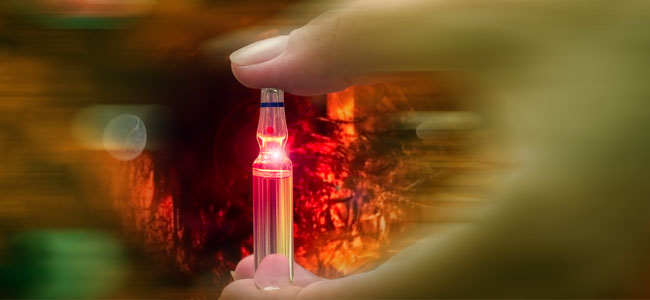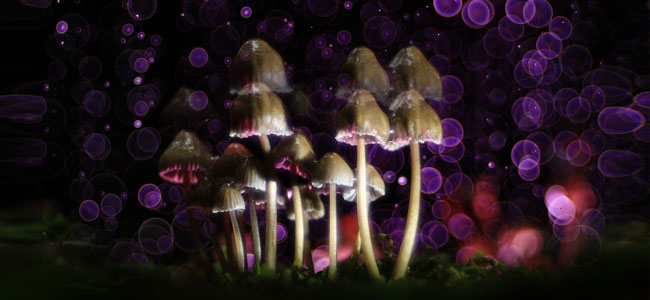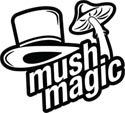How To Microdose Magic Truffles
Psilocybin is the active ingredient found in certain types of mushrooms and truffles. In large doses, psilocybin acts as a psychedelic substance and can alter perception of the external world through its effects on the human brain and central nervous system. But what about microdosing?
Psilocybin containing mushrooms have documented use among human civilisations that span far back into history, and are still used today in order to induce an altered state of consciousness to achieve a certain outcome. Many people use psilocybin containing mushrooms and truffles to engage in a fully psychedelic experience. However, a new trend is emerging that focuses on consuming very small doses in order to experience more subtly beneficial effects, whilst still being able to fully function at work and in social situations without experiencing the full hallucinatory experience.
Such a small dose has been appropriately labelled a microdose. It is not something restricted to psychonauts either. People involved in massive business ventures in places like Silicon Valley are using micro doses of psychedelic substances such as psilocybin and LSD in order to increase focus, boost creativity and really enjoy their work in order to obtain an upper hand in their fields.

MICRODOSING TRUFFLES
One example of an individual using microdoses for creative and professional purposes was interviewed by Wired. With regards to microdosing, she stated, “It helps me think more creatively and stay focused” adding, “I manage my stress with ease and am able to keep my perspective healthy in a way that I was unable to before”.
Dr. James Fadiman, psychedelic researcher and author of The Psychedelic Explorer’s Guide, has weighed in on microdosing, and theorises why it might be so effective in such a professional environment, “What you get is the best parts of Adderall with none of the side effects. You function better physically and mentally. You find the office jerk bearable, and you’re more compassionate about the flaws of others”, continuing, “You feel you’ve had a pretty good day.”
There is little scientific evidence or research behind the idea of microdosing. Hopefully, this will change in the future, and we will have a full grasp of how to do it properly and just what it can achieve. Most of the understanding of microdosing has come from collections of anecdotal accounts. Fadiman has set up a website named microdosingpsychedlics.com. People can enroll into studies here by filling out a form. The aim of these studies is to collect data on micro dosing and to provide information about safe and efficient microdosing use.
HOW TO DO IT
A microdose of psilocybin mushrooms is said to be 0.2-0.5g. It must be noted that truffles and mushrooms differ in their strength, and different strains or types of psilocybin truffles are far stronger than others. Also, body weight and individual tolerance needs to be considered, along with stomach contents and other parameters. As mentioned, research into microdosing is still in very early stages and therefore it is advised to advance with caution and to listen to respected professionals within the field.
When microdosing truffles, you will need scales that are capable of weighing extremely small amounts of material. Some people also speak of dividing their material up and placing it into empty capsules, making it easier to store and means the correct dosage is ready for when you wish to take it.
It is suggested to take a microdose every 4th day for a period of 10 weeks. So that might mean taking a dose on Sunday, observing any effects on Monday, taking a day off on Tuesday, taking another microdose on Wednesday, observing any effects again on Thursday, taking Friday as a day off and Saturday as another day off. It is good practice to take notes throughout the time you are microdosing to see what the differences are and what the potential benefits might be to you as an individual. It is also suggested that you continue to simply follow your normal routine whilst microdosing.
A microdose is described as being sub-perceptual, meaning the user does not experience or perceive the psychedelic states produced by the substance at larger doses. They do, however, experience the beneficial subtle effects. What these will be can be individual, but it is generally thought that all-round well-being/performance is slightly enhanced.

A NEW VIEW OF PSILOCYBIN
Inventor of LSD, Albert Hofmann, expressed, “Sub-perceptual doses are the most under-researched area of psychedelics.” This statement is still accurate, and hopefully with more relaxed drug laws and advancements in the scientific understanding of these compounds, micro dosing can be properly explored and utilised.
The war on drugs has made sure the stigma surrounding psilocybin is strong, well known and enough to force scores of people to categorise it among truly harmful substances such as crack cocaine and heroine. Psilocybin's Schedule 1 status in the US and Class A status in some European countries means it is regarded as dangerous, easy to abuse and that it has little to no medicinal value. This outlook on psilocybin is being challenged fairly heavily in recent times, with researchers being given the chance to explore its mechanisms of action and potential as a medicine for an array of mental disorders.
Perhaps one of the the most noticeable breakthroughs included a study carried out at Johns Hopkins University that involved administering psilocybin to 29 cancer patients. After a single dose of psilocybin 80 percent of the patients had noticeably better mental states in regards to the feelings and symptoms associated with depression and anxiety. One patient involved in the study, Sherry Marcy, commented on how the experience affected her, “The cloud of doom seemed to just lift… I got back in touch with my family and kids, and my wonder at life”, adding, “Before, I Was sitting alone at home, and I couldn’t move… This study made a huge difference, and it’s persisted.”
Another extremely interesting study that was published in the journal Nature administered psilocybin to 12 people with depression who had not responded to standard medication. Incredibly, one week after receiving the oral dose of psilocybin, all of the patients experienced improvement with their depressive symptoms. After 3 months, five of the patients had achieved full remission. The authors of this study do not state that psilocybin should be used as a last resort treatment, but they do claim it is doable.
While these were not microdoses, it shows the effect this substance can have. With these new breakthroughs in psilocybin research, it is now a fact that the compound has vast potential for acting on the human brain in positive ways. This research makes the phenomena of microdosing all the more interesting and plausible.

